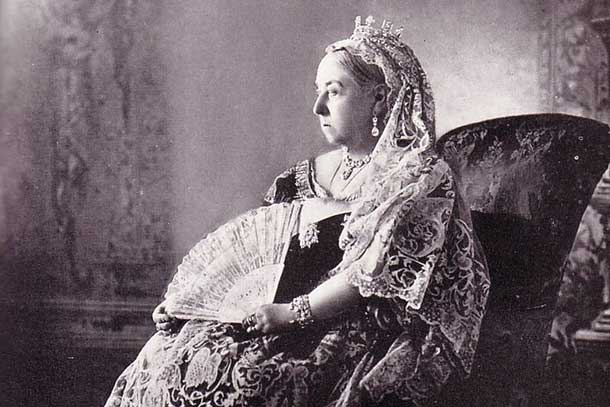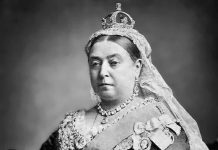
THUNDER BAY – LIVING – Queen Victoria’s reign as monarch of Great Britain and Ireland amounts to one of the longest stretches of any democratic ruler. Straddling two centuries from 1838-1901. Mobilizing an Age of Industry developing a full force industrial modem. While hosting inventions put into practice that continue today.
Queen Victoria’s era really blends into who we are. Our Commonwealth of Canada, our democracy forged in carrying a Canadian passport. Our patterns and systems in education, our political, philosophical parliaments.
And let’s not overlook our daily hygiene and something forever taken for granted and what was known as the Water Closet (WC) or the Dunny. Thus eliminating nefarious times and yet within the British Isles just before Victoria’s Coronation there was a tremendous Industrial push to harness steams. Events occurring rapidly where England’s well-tried agrarian methods really harped back to Greek and Roman times.
Horses pulled machinery. Hence horse power. Employed cultivating with ploughs. Country coaches. Or, city carriages. Circus caravans. Paddy wagons used on police patrol.
It’s been said; forecasting what was to come Britain’s technology would become the Age of Steam. “Steam was the Genie,” a researcher at The Newberry International Library, in the USA, told me last week.
He went on, “and it was the English that let the steam out of the bottle.”
Following up when Queen Victoria became a young Queen overlooking an expanding British Empire her divisions of explorers, inventors, adventurers, armies and navies had already begun sailing to all points on the compass. Navigating the Seven Seas. There was not a continent where the Brits had not set foot.
OUR GRAMMAR SCHOOL
In our grammar school geography our teacher was an ex-pat from the British Isles. Stood
In his tweeds describing topics enthusiastically. He used a rubber tipped pointer gently touching ports-of -call on a canvas map he’d brought from London. He was our narrator to an exterior world beyond windows.
To remember was his mantra. School was to indicate ways of remembering dramatic events, dates, and, data. We ‘d remember his patterns explaining the typography of the Nile. The ancient Arts & Culture in Chinese Mandarin. The uniqueness on the Ivory and Gold Coasts of Africa.
History of spinning hand clothing in India. All these features toned in red, on his map, indicating where a British nation had been.
A mellow pride wavered in his voice allowing time to write our notes. Like a gentle breeze through greening crops these notions were as roots developed in good soil.
QUEEN VICTORIA’S WAYS
Certainly Queen Victoria did push buttons on various panels developed by her scientists and engineers.
One lasting creation came via an epiphany for sanitation after the passing of Albert, her husband. It was 1861. Exasperated, Victoria was perplexed. She sought a badly needed sewage system.
The key was piped water.
It was Victoria’s operative. A time when Florence Nightingale was paving her way in hospitals in Crimea. Victoria channelled Britain’s plumbing inventions into its outright future. Culminating in flush toilets. Articulating its reservoir. China bowl and necessary parts. All these innovations to cross the English Channel and France and the entire Continent.
ORIGINS of VICTORIA’S MODERN PLUMBING
To give a synopsis of what had developed.
A Scots watchmaker Alexander Cumming who secured the first patent for a simple kind of flush mechanism in 1775. Though latterly Cummings (for the English added an s to his name) ideas would see several modifications making each change more durable within a family’s living quarters.
Much later a siphon technique designed by Albert Giblin. Giblin was a worker in Thomas Crapper’s workshop. It was recorded, “a lavatory with water trapped the stench. Allowing any waste to be siphoned off. Then, pulling a chain opens a valve causing water in a cistern to gush into the bowl. When it is empty a floating ballcock closes the valve. The tank refills under pressure from the water supply.”
Of course, like our modern sump pumping systems, the craftsmanship in perfecting a ‘Royal throne’ has a science and technological well documented. It is through the devotion of rather
Ingenious craftsmanship
But the art of the dunny was Queen Victoria’s vision. British writer Rose George has written a marvellous book called The Big Necessity. That came about while George was researching, “while using washroom facilities in the British Reading Rooms, “she reflected, “Because we do what we have to do. Then flush. And forget it immediately. All my life I have done it. Then forgotten about it.”
Her book takes her around the globe discovering ways others, in the so called third world, have gradually moved away from mere primitive pit toilets to being blessed with adaptations of
More practical ways. Striving for what the World Health Organization labels “livable latrine systems.” However, all this boomerangs back to the Victorian mill rights.
A LEGACY THRIVES VIA VICTORIAN WRITERS
Pierre Trudeau liked to say the legacy of a nation lives long after time, and formative decades, through its thinkers and writers. I like that assessment.
Looking at Victoria’s authors who’ve maintained a place in history and trying to describe multiple bio notes on the dozens, upon dozens, of her distinguished ones; like Kipling, of India, Wordsworth, of the Lake Country, or Lord Tennyson or the Bronte’s and the Browning’s would really stretch this well beyond my theme.
Instead to a glancing focus on three unique minds. Being Dickens, Darwin and Dodgson. Each garnered a specialty for what survives. Their original creativity in thinking, writing, leaving
Our world a brighter, more informed enthusiastic planet in reading what they crafted.
Beginning with Charles Dickens. Dickens novels propelled mankind into a really personal, and democratic, channel discovering new subjects reading. Reading for pleasure. The outright liberty of holding a book and travelling page by page through plot, dialogue and denouement to an ending that strengthens one ties in just understanding where the author, his created characters are coming from. Dickens’ fiction was truly based on a realism that riveted him wherever he walked along the Thames. Everyone celebrates his work at Yuletide with re-readings of a Christmas Carol. Fireplaces are lit as gathering places with the hill of winter outside. Church bells ring out. Choirs sing. Where our traditional spiritual values in good fellowship carry the day.
Dickens was an avid walker. His field trips formed lasting impressions that compelled his publications in books. So gifted in his story telling many of his completions have become classic.
Then there is Charles a Darwin. His Origin of The Species became such a revelation about the
Underpinnings of who we are? Understanding where transformations occurred that made up his theories in Evolution.
Earlier this year I met the work of Janet Browne at DePaul University. A Darwin expert Browne
said, “Darwin does not fit the usual stereotype of what we nowadays expect in science. His is
a wonderfully personal style. With no graphs, or maths, no reference to white-coated figures in a lab. Most of all, Darwin doesn’t employ specialized language.”
She continued, “Darwin’s Origins books sold out on the book trade on publication day. It was broad in scope. Full of insight. Packed with evidence to support Darwin’s scientific suggestions.”
Yet the scope of what was happening across the landscape of England, during Darwin’s five years of absence collecting natural specimens on a ship called the Beagle, were quite mind-boggling.
Steam engine locomotive trains replacing stagecoaches. Towns blossomed. Colleges were built. Factories were being located at river ports for ease in navigation. Newly built spires on churches created nocturnal silhouettes that were the subject of Victorian painters.
Janet Browne notes, “Such a thriving industry was sprouting everywhere. This age was truly, also, the England of Dickens classic tales as well.”
Finally, a writer who used a nom de plume for his books: Lewis Carroll. Otherwise he was Dr. Dodgson. His best work a literary triumph, and spin off, based on the real Alice Dodgson knew. He modelled his fairyland Alice meandering on her wavering dreamtime routes after her.
Who among us has not been overwhelmed by Carroll’s, almost immortal book: Alice Through The Looking Glass.
Such a charming adventure in vision and magic realism. We follow Alice undergoing substantial changes. In meeting places populated by a wide array of Lewis Carroll’s artistic offspring.
The double speak, at times, almost a preview to George Orwell to come. Orwell’s prediction called 1984.
Though the Duchess becomes a metaphor, within a gentle Victorian philosophy, imprinted on
Us through the premise of a children’s book. Virtually crafted with a limerick-like fantasy that speaks to all ages. From young children in a nursery school to more advanced locations where are elderly are consoled, cared for, later in life in nursing homes.
The Duchess chatter to Alice goes, “be what you would seem to be. Or if you’d like,” the Duchess then suggests, “if you’d like to it put more simply. Never imagine yourself not to be. Otherwise than what it might appear.” These lines quoted often by many educators I recall through college and university classes.
They were affirming Lewis Carroll’s frolicking childhood story often invoking a subtle Shakespearean nature. Rendered especially for the carefree state of children imagining, dwelling in, a playful profound-ness. For Carroll polished his artistry to perfection.
And if this narrative acts as something like short rations for readers with a bigger appetite in reading further about Victorian times; this transmission will highlight something once collected with a politician in British Columbia.
He was a reader, admirer, of politically short Royal decrees. Known as speeches to the elected in Parliament. His desire was to encounter speeches that stood for the fact “the more is said upon not saying everything.” He was, in the viewpoint of a colleague of mine, aiming to say this. Parliamentary speakers should spit out the essence of what was being shared. As pain free as possible. Without lingering– on and on–in garble becoming taxing to the ears of its public.
We had been doing a walkabout round Queen Vicky’s distinguished and prominent bronze sculpture on the Parliament lawn in Victoria. Then, he said something wordy. But, he soon got to the quick of things.
He said at times in his imagination he could almost envision Queen Victoria’s presence when she might have come forward with this imaginary thought. He likened it to an Oriental haiku. Queen Victoria’s genuine appreciation with something, about another human being’s worth,
“I’m obliged.
For you.
In this.”
Says it all.
Giving such a Victorian applause to others on Queen Victoria’s Holiday Weekend.
Ronn Hartviksen

